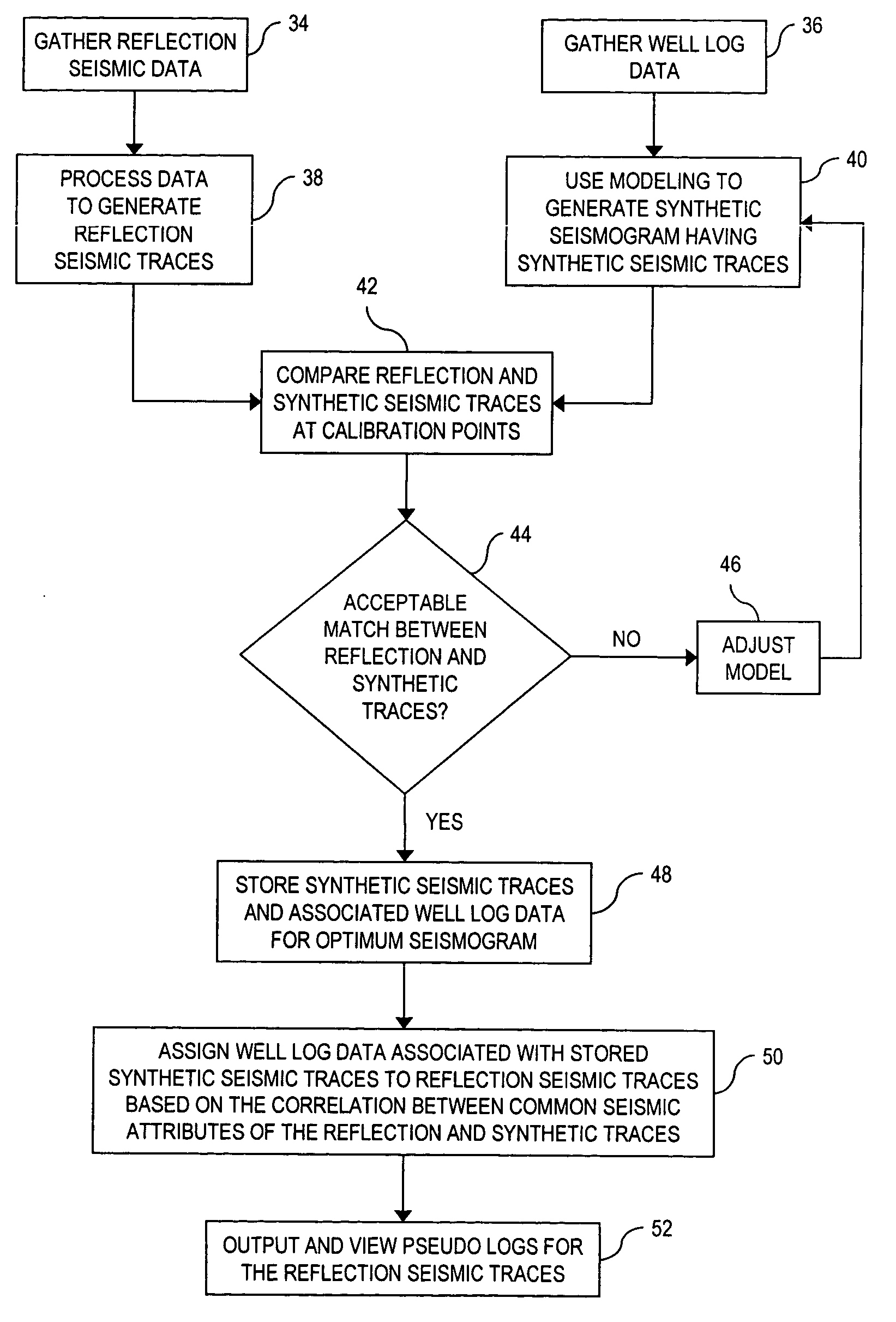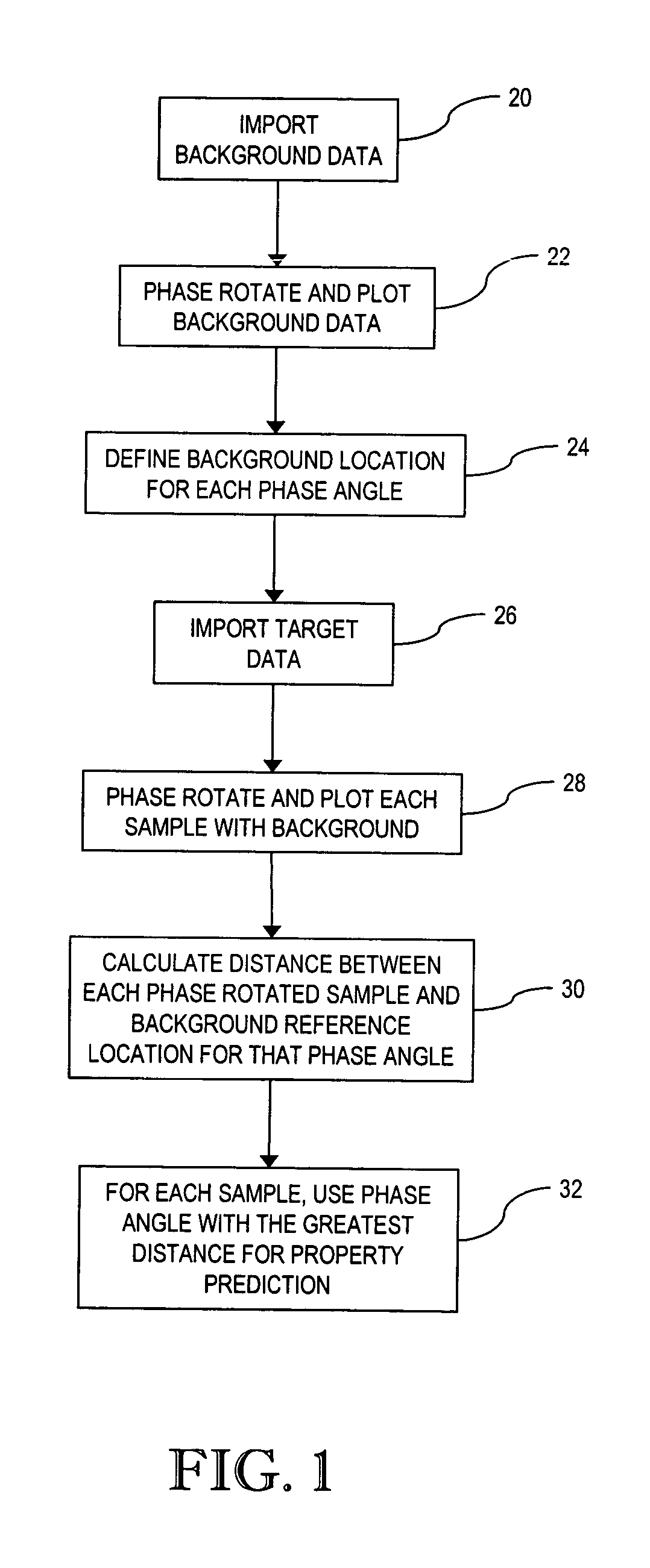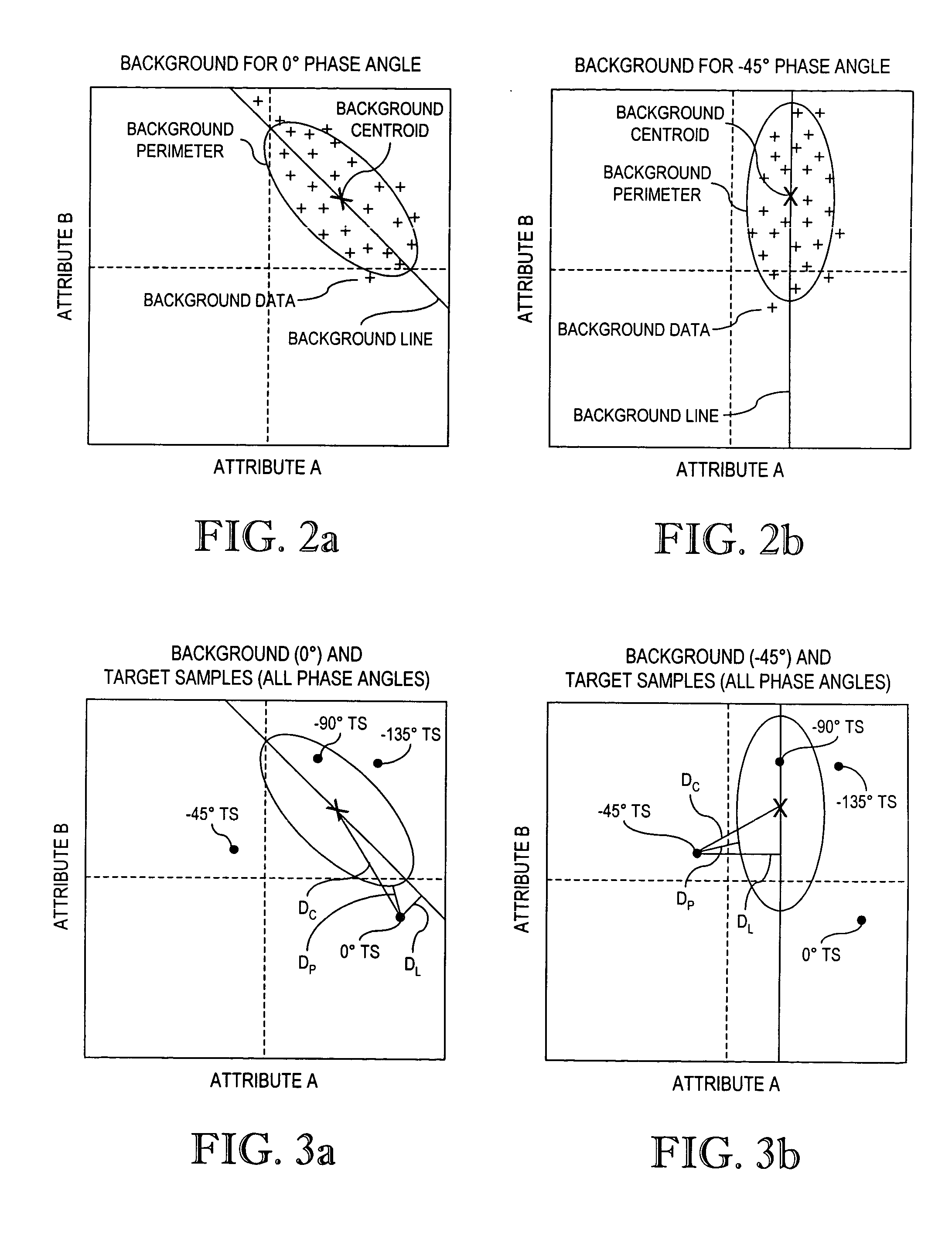Concurrent phase angle graphic analysis
a waveform and graphic analysis technology, applied in the field of filtering waveform data, can solve the problem of smearing of abrupt boundaries between regions of the body having different physical and acoustic properties, and achieve the effect of accurate boundary location and accurate property prediction
- Summary
- Abstract
- Description
- Claims
- Application Information
AI Technical Summary
Benefits of technology
Problems solved by technology
Method used
Image
Examples
Embodiment Construction
[0035] The present invention finds application in a variety of situations where digital or analog waveform data / signals are electronically processed. The processed waveform data / signals can be generated from a number of different sources such as, for example, radiation waves, optical waves, acoustical waves, electrical waves, or physical / vibrational waves. The present invention can be advantageously applied to waveform data that is used to indicate the physical properties of an object or waveform data is used to locate boundaries between two physically dissimilar regions of an object. In a preferred application, the waveform data employed in the inventive process represents waves that have been reflected by a physical body. However, it is entirely within the ambit of the present invention for the processed waveform data to represent non-reflected waves / signals such as, for example, digital or analog communication signals or acoustical (e.g., musical) signals.
[0036] Referring to FIG...
PUM
 Login to View More
Login to View More Abstract
Description
Claims
Application Information
 Login to View More
Login to View More - R&D
- Intellectual Property
- Life Sciences
- Materials
- Tech Scout
- Unparalleled Data Quality
- Higher Quality Content
- 60% Fewer Hallucinations
Browse by: Latest US Patents, China's latest patents, Technical Efficacy Thesaurus, Application Domain, Technology Topic, Popular Technical Reports.
© 2025 PatSnap. All rights reserved.Legal|Privacy policy|Modern Slavery Act Transparency Statement|Sitemap|About US| Contact US: help@patsnap.com



